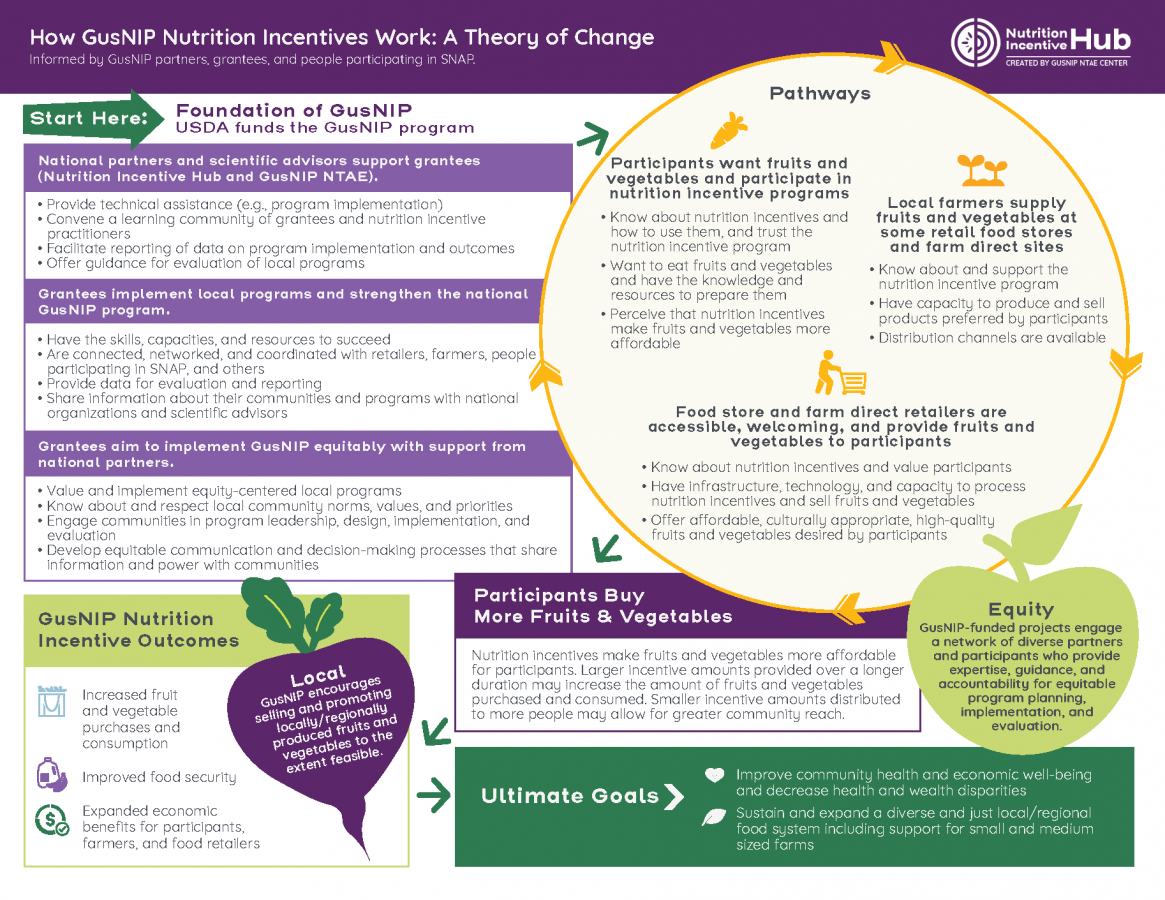CCH executive director, Blanca Melendrez, contributed to an article, How Does the Gus Schumacher Nutrition Incentive Program Work? A Theory of Change (Nutrients 2022, 14, 2018) published earlier this month. While a growing body of research indicates nutrition incentive (NI) programs are effective, less is known about the pathways through which its results are achieved. The United States Department of Agriculture’s Gus Schumacher Nutrition Incentive Program (GusNIP) supports state and local programs that offer nutrition incentives (NIs) that subsidize purchase of fruits and vegetables (FVs) for people participating in the Supplemental Nutrition Assistance Program (SNAP). Authors used an equity-focused, participatory process to develop a retrospective Theory of Change (TOC) to address this gap. They reviewed key program documents; conducted a targeted NI literature review; and engaged GusNIP partners, practitioners, and participants through interviews, workshops, and focus groups in TOC development. The resulting TOC (below) describes how GusNIP achieves its long-term outcomes of increased participant FV purchases and intake and food security and community economic benefits. GusNIP provides NIs and promotes their use, helps local food retailers develop the capacity to sell FVs and accept NIs in accessible and welcoming venues, and supports local farmers to supply FVs to food retailers. The TOC is a framework for understanding how GusNIP works and a tool for improving and expanding the program.

